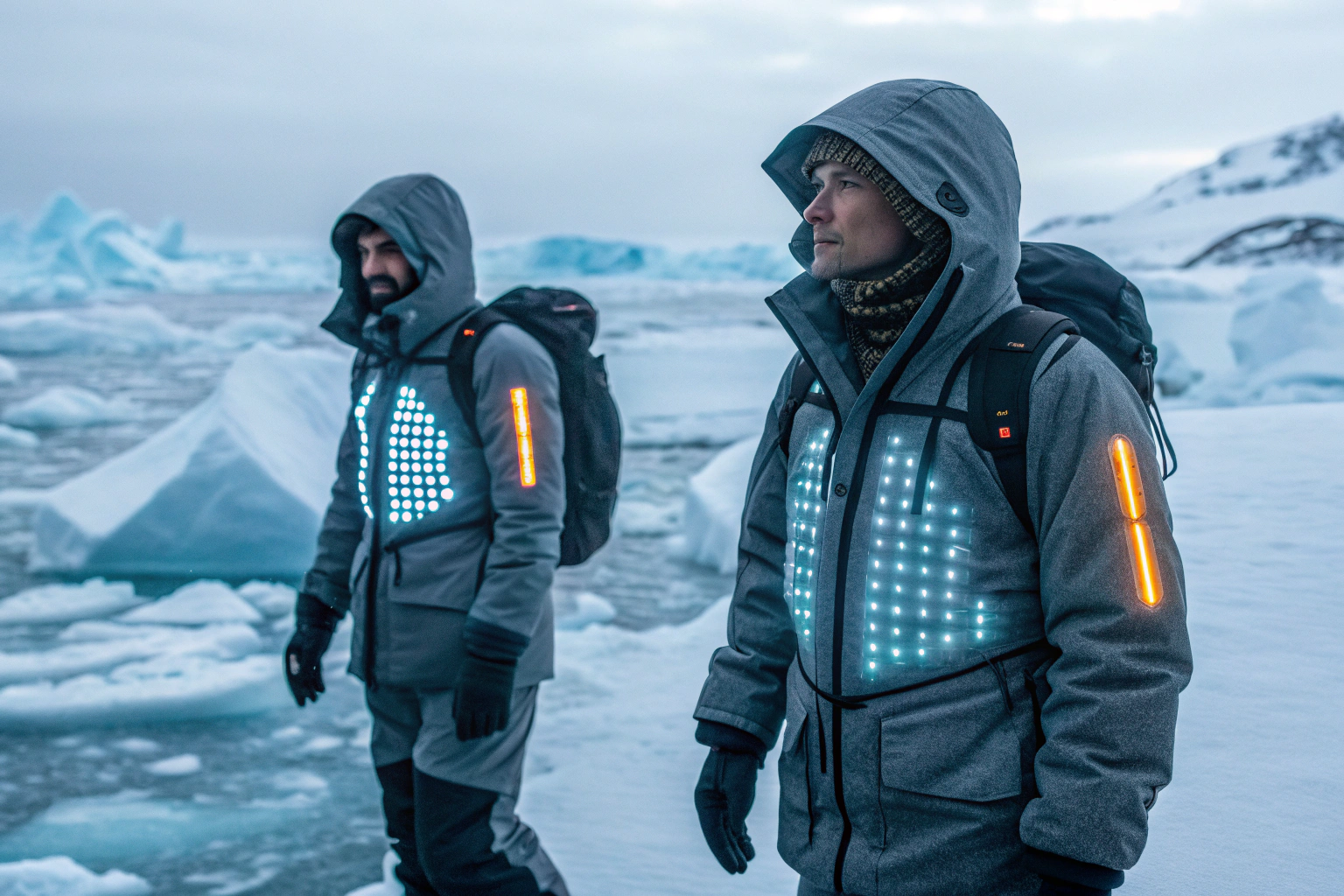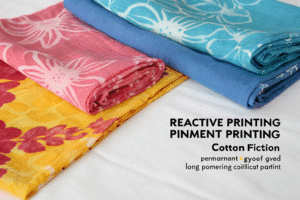People in the Arctic face strong cold and heavy ice. Normal clothing cannot always give enough protection. Self-deicing conductive fabrics bring a new answer. These fabrics use special fibers that make heat. They stop ice from staying on the surface and keep the gear flexible. Explorers, workers, and scientists can stay safe and warm for longer hours. Unlike normal insulation, these fabrics act on their own. They give heat where it is needed and adjust when the temperature changes. This article explains how they work, their main benefits, how they compare to old gear, and what the future may bring.
How Do Self-Deicing Fabrics Work in Extreme Cold?
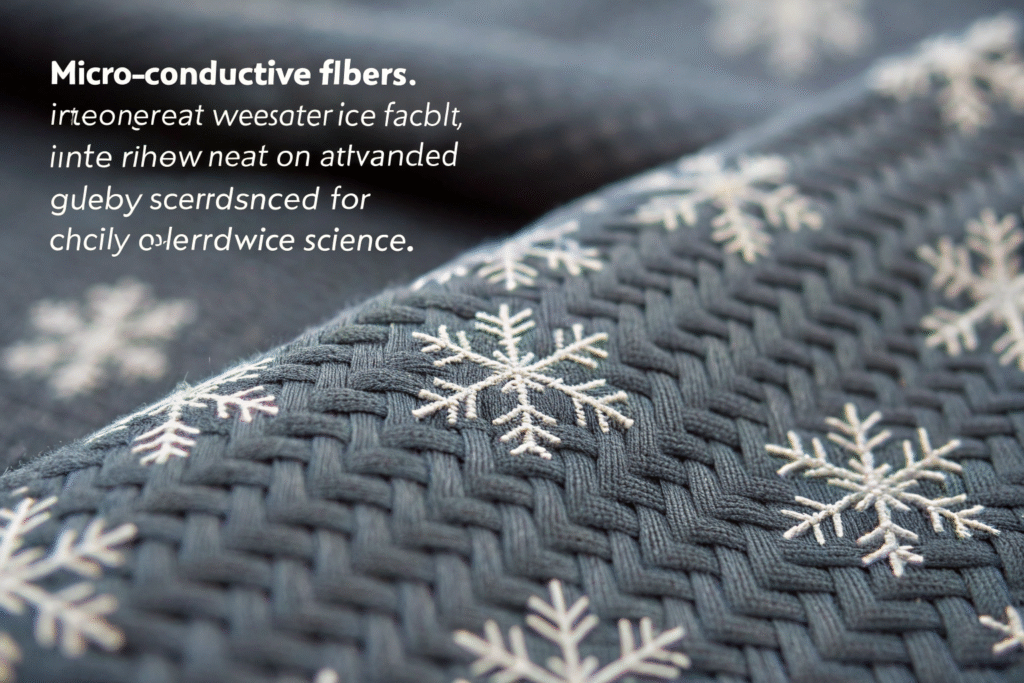
Conductive Fibers and Heat Generation
Self-deicing fabrics use conductive fibers. These fibers may be silver-coated nylon or carbon threads. When connected to a small power source, they create heat. The heat spreads and melts ice before it builds up. This is close to heated clothing, but the system is built inside the fabric. The design keeps the clothes light and easy to wear. It also works many times, unlike one-use heating packs.
Smart Sensors and Temperature Control
Some fabrics include tiny sensors. These sensors check the surface temperature. They guide the power and keep the fabric from wasting energy. They also stop the surface from becoming too hot. Studies on smart textiles show that this control makes people more comfortable in the cold. The system gives steady warmth and helps save power, which is very useful in Arctic trips.
Benefits of Conductive Textiles for Arctic Clothing
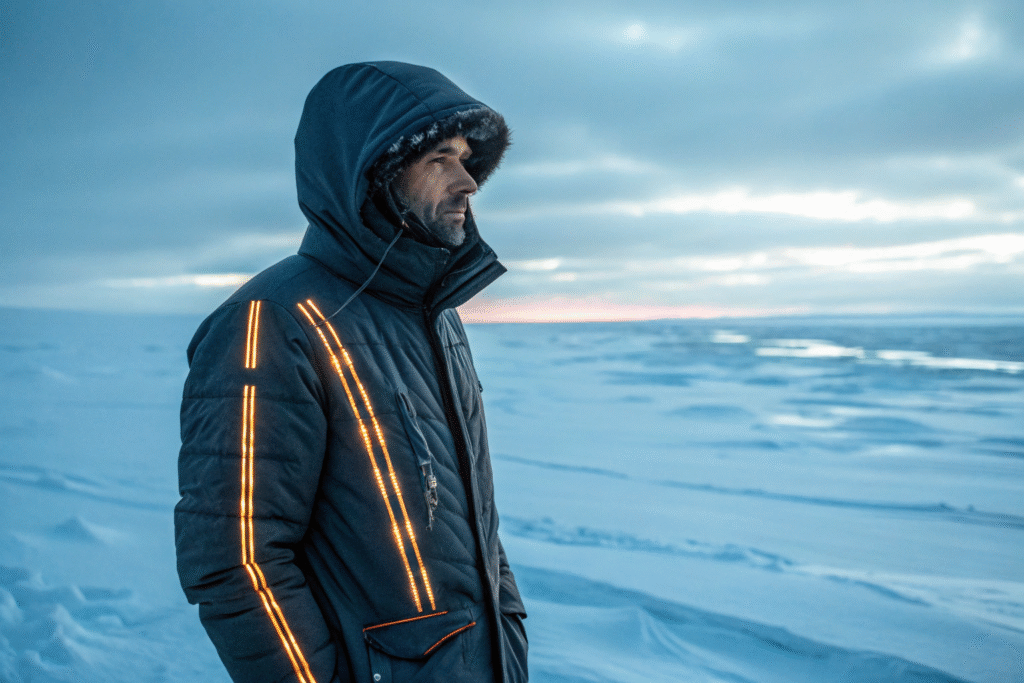
Enhanced Comfort and Safety
Conductive fabrics protect the body from frostbite. They send heat to key parts like the chest, hands, and feet. Old Arctic clothing uses many layers. These layers can trap water and make the body colder. Outdoor Gear Lab shows that dry layers are most important in freezing weather. Conductive textiles reduce moisture and lower the risk of damage to skin. This is important for soldiers, rescue teams, and winter sport fans.
Lightweight Design and Mobility
Conductive fabrics also make clothing lighter. Old jackets use thick fill that limits body movement. Conductive textiles remove the need for many layers. They give warmth and freedom at the same time. This idea follows new performance wear designs, which value both comfort and movement. For Arctic workers, free movement is not only comfort but also safety.
Comparing Self-Deicing Fabrics vs Traditional Insulation
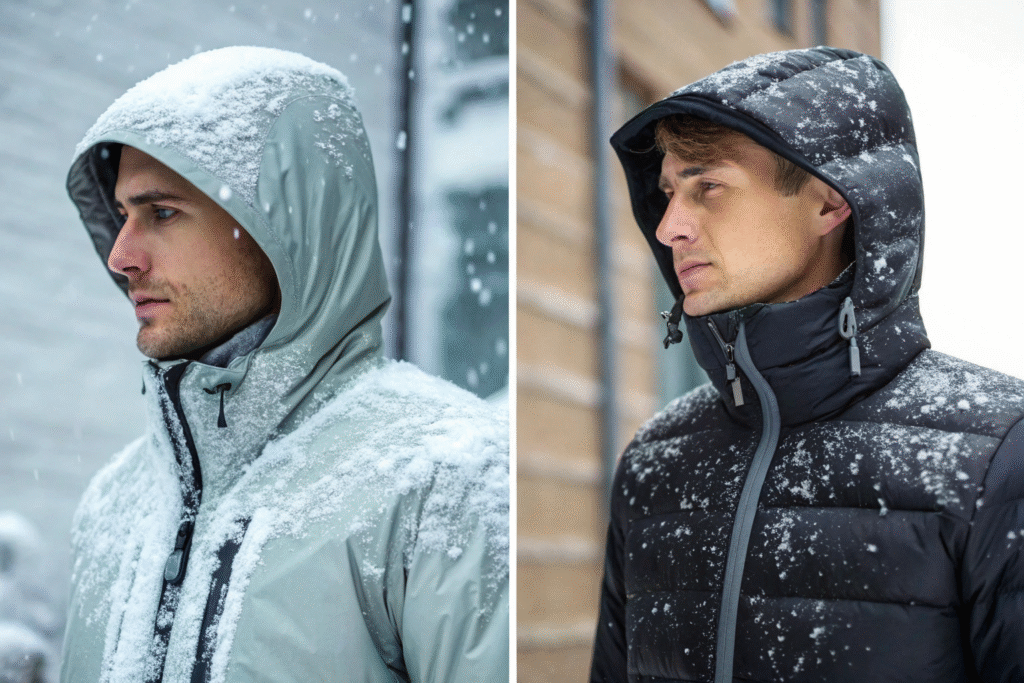
Efficiency in Harsh Environments
Normal insulation such as down traps body heat. It can help, but it does not stop ice. Ice on the outside makes clothes heavy and stiff. Self-deicing fabrics warm the surface to melt ice quickly. Reports from National Geographic Gear Tests point out that this is key in Arctic gear. Traditional jackets cannot give this kind of active support.
Longevity and Maintenance
Self-deicing fabrics last longer than normal jackets. They do not need much drying or de-icing. Old jackets lose heat ability after many wet and dry cycles. Fabrics with heat fibers keep working through many freeze and thaw rounds. Studies in Textile Research Journal confirm this. For people who use Arctic clothing every year, this means more value and less cost over time.
Future Applications of Smart Textiles in Polar Gear

Integration with Renewable Energy
Future Arctic gear may join with solar power. Solar panels that bend can now work with clothing. They can give steady energy to conductive fabrics. The U.S. Department of Energy shows progress in this area. This will help jackets and gloves power themselves. People in the Arctic may then use less extra battery weight.
Expanding Beyond Arctic Gear
Smart fabrics will not stay only in Arctic use. They may also work in planes, climbing gear, or daily jackets. MIT Technology Review reports that smart clothing is growing fast. People want clothes that adapt to the weather. For Fumao Fabric, this is a big chance to lead. We can use this idea in more markets, from polar clothing to normal fashion wear.
Conclusion
Self-deicing conductive fabrics give a clear step forward in Arctic clothing. They solve problems that old insulation cannot fix. They stop ice, give steady heat, and last longer in harsh weather. They are also light and easy to wear. In the future, these smart textiles will work with solar power and may reach many other fields. For people who face extreme cold, this fabric is not only a choice but also a strong support for safety and comfort. For companies, it is a chance to lead the next wave of fabric innovation.

